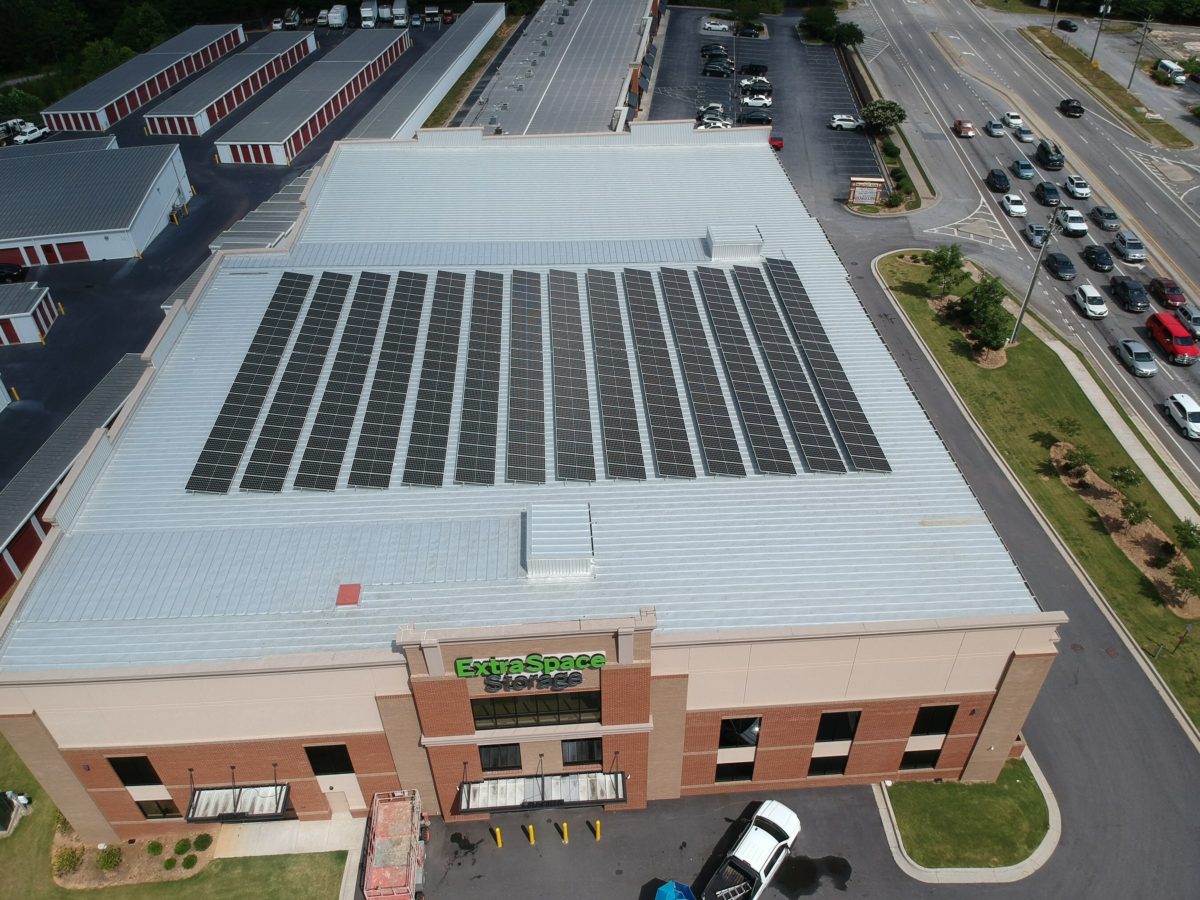Extra Space Storage, a US storage center operator, will deploy an additional 946.8 kW of rooftop solar capacity, bringing the commercial operator’s cumulative renewable energy portfolio to 15 MW of installed capacity.
Pivot Energy will install nine rooftop solar arrays on Extra Space Storage facilities, adding new clean energy capacity across a commercial building portfolio producing about 20 million kWh of renewable energy per year, the equivalent of powering 2,500 homes.
To date Pivot Energy has developed 150 solar systems in 12 states along the East Coast, California and Colorado for Extra Space since the companies first formed a partnership in 2018.
“Solar has helped Extra Space Storage realize significant cost savings, but more importantly, it’s the right thing to do,” said Steve Potter, project manager at Extra Space Storage. “Working with a certified B-Corp such as Pivot Energy has been crucial to pursuing our own ESG goals.
In addition to Pivot, Extra Space has partnered with Safari Energy, Solar Landscape and Core Development Group to deploy solar systems around the country. Its most recent deployment with Solar Landscape in Neptune, N.J., provides additional capacity to up to 700 low-and-moderate income residents under a local community solar program.
According to the Solar Energy Industries Association’s “Solar Means Business 2022 Report,” Extra Space Storage was ranked the 14th largest corporate user of solar energy by total number of system installations, with 67 solar installations deployed on buildings to date.
Extra Space’s solar investment strategy was to first add PV systems in markets with the greatest tax incentives for installations, such as New Jersey and the Northeast. Then the company sought expansion into areas where electric costs are high, such as Hawaii.
According to an Extra Space blog post, the company’s solar process takes three to five months and follows a 10-step process:
- Identify properties that are good candidates for solar.
- Complete return on investment (ROI) evaluation.
- For encumbered properties, get lender approval.
- File local permits after submitting designs and plans.
- Apply for an interconnection agreement.
- Set up net metering.
- Install the solar system.
- Connect the solar system to grid, and turn system live.
- Get commissioning date from utility company.
- Generate electricity!
Based in Salt Lake City, Extra Space Storage is an integrated, self-administered and self-managed real estate investment trust. As of June 30, 2018, the company owned and/or operated 1,568 self-storage properties with over 1 million units across 119 million square feet of storage space.
According to the New York State Energy Research and Development Authority’s distributed energy resource database, a sample 126 kW Extra Space rooftop solar system in Gowanus, Brooklyn generated 1,057 MWh of electricity over a seven-year capacity study from October 2013 to November 2020. The study found the facility’s capacity factor of 13.4% ranked third in utility Con Edison’s Zone J region of New York City, with solar facilities owned by Big Geyser Inc. and Marjam ranking higher with a 13.6% capacity factor.
This content is protected by copyright and may not be reused. If you want to cooperate with us and would like to reuse some of our content, please contact: editors@pv-magazine.com.









By submitting this form you agree to pv magazine using your data for the purposes of publishing your comment.
Your personal data will only be disclosed or otherwise transmitted to third parties for the purposes of spam filtering or if this is necessary for technical maintenance of the website. Any other transfer to third parties will not take place unless this is justified on the basis of applicable data protection regulations or if pv magazine is legally obliged to do so.
You may revoke this consent at any time with effect for the future, in which case your personal data will be deleted immediately. Otherwise, your data will be deleted if pv magazine has processed your request or the purpose of data storage is fulfilled.
Further information on data privacy can be found in our Data Protection Policy.